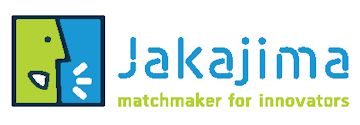3D food printing is a futuristic technology that consists of additive manufacturing to create personalized and creative food products. 3D printing can deliver a product that adapts to specific consumption, texture, taste, cost, practicality, and nutrition. Extrusion-type 3D printing is the most common for the production of printed foods, as it is easy to process and allows the use of different types of materials (called “food inks”).
Starch is the most important carbohydrate in the human diet, considered a cheap and accessible food source, and has been widely used as a thickener and gelling agent in several food formulations. Currently, this carbohydrate has been of great interest to 3D printing applications.
In this context, this presentation shows 3D printing of starch-based foods and discussions the effect of crucial factors involved in the process or post-process to achieve the desired quality and precision.
Interview with Bianca Maniglia
What drives you?
Search for knowledge and achievements.
Why should the delegate attend your presentation?
Because it brings interesting information and discussions about the use of starch as a potential ingredient to improve or diversify the 3D printing quality of food.
What emerging technologies/trends do you see as having the greatest potential in the short and long run?
In the short run, I consider extrusion-type 3D printing technology as having high application potential. In the long run, I believe there will be further development of new food ink formulations and 3D printing equipment that will make this technology more popular.
What kind of impact do you expect them to have?
The great impact of innovations arising from 3D printing technology, both about the equipment and the material being processed, will reflect on the food quality of individuals, being beneficial for, for example, individuals who need specific textures such as people with dysphagia. Or guaranteeing greater acceptance of certain foods or even the creation of new ones.
What are the barriers that might stand in the way?
What can hinder the development of food applications via 3D printing would be the price (from formulations to equipment) that could not popularize the technique, remaining in a more restricted niche.
Bianca Chieregato Maniglia is graduated in Chemistry (2010) from the University of São Paulo (Brazil) and in Chemical Engineering (2013) from the University of Ribeirão Preto (Brazil). She obtained a master’s degree (2021) and a doctorate (2017) in Chemistry from the University of São Paulo(Brazil). Maniglia was a postdoctoral fellow at Polytechnic School of São Paulo-Brazil (2018) andONIRIS/INRAe-France (2020).
Currently, she is a researcher at the Department of Chemistry – University of São Paulo (Brazil). Maniglia has experience in characterization and applications of natural polymers, studying emerging technologies, and processes such as casting, extrusion, and 3D printing.
Bianca Maniglia will speak at the 2021 edition of the 3D Food Printing Conference.
